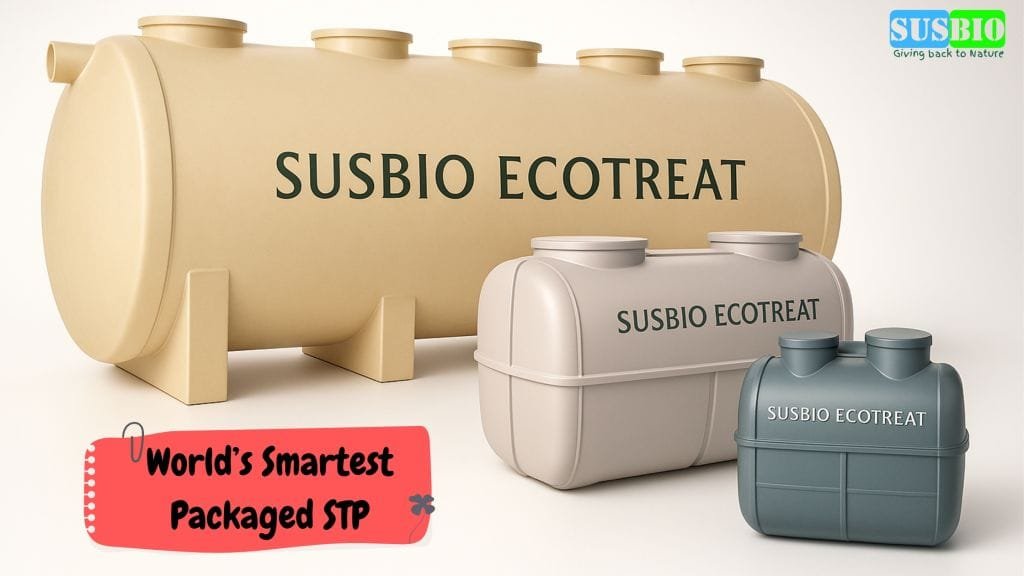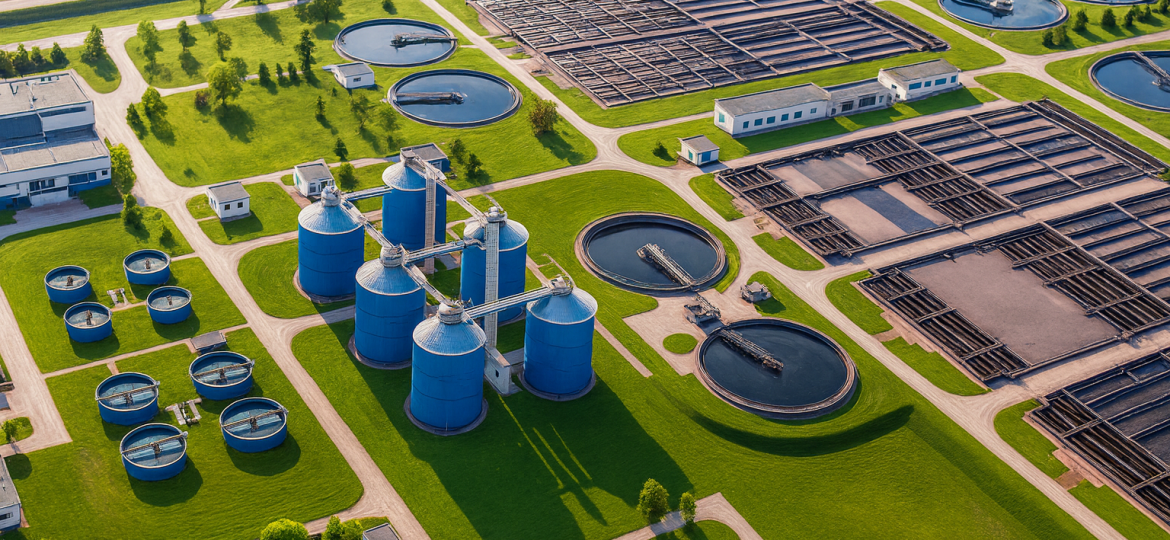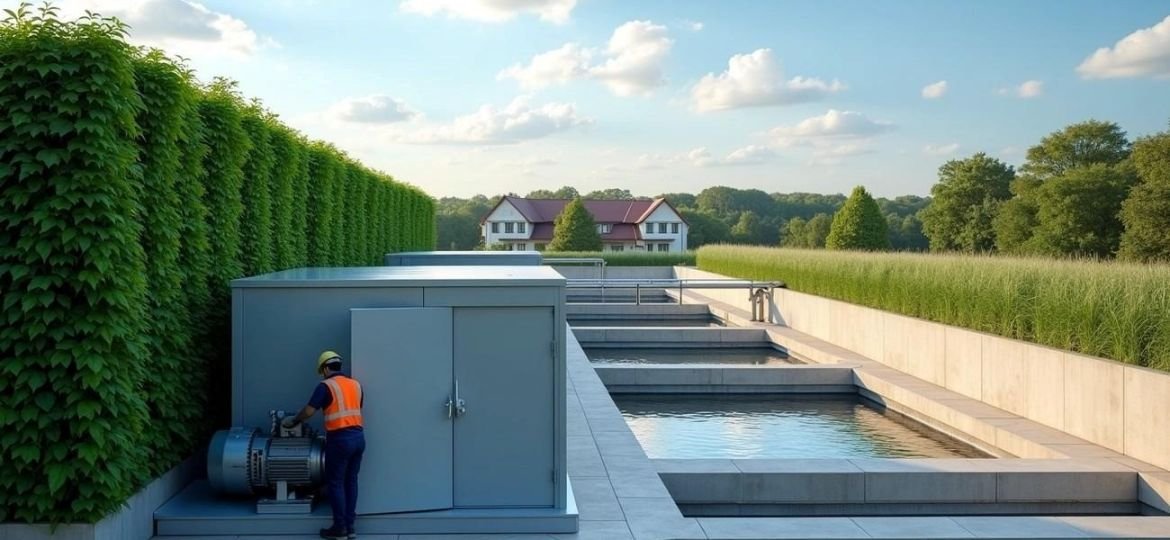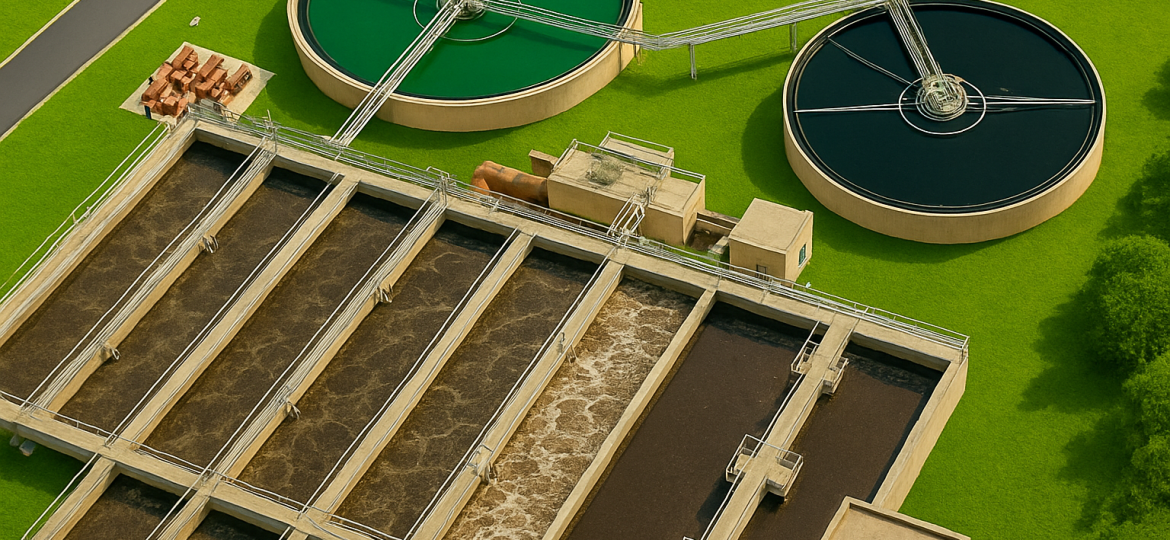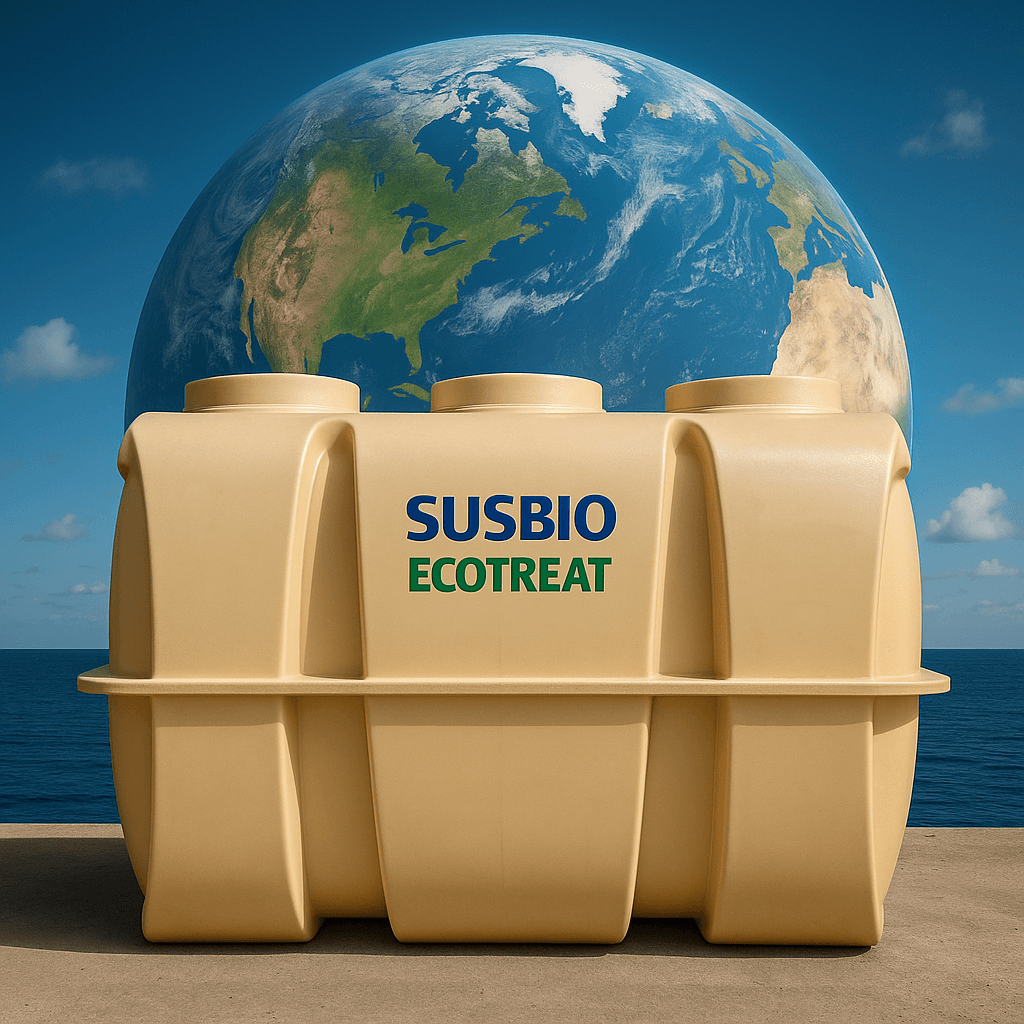Modern wastewater treatment has been revolutionized by FRP STP systems, thanks to their innovative design and practical advantages. These lightweight, corrosion-resistant sewage treatment solutions need nowhere near the installation space that conventional concrete-based systems require. Engineers and facility managers often find it challenging to pick the right FRP sewage treatment plant without proper guidance.
The right packaged STP plant starts with understanding your needs. Your FRP STP plant’s capacity directly relates to daily wastewater generation in kiloliters per day (KLD). Residential buildings and apartments need anywhere from 1-500 KLD. Hotels and malls require larger capacities between 10-1000 KLD. Industrial facilities typically need FRP STP tanks that can handle 5-1000 KLD.
SUSBIO ECOTREAT stands out as a remarkable FRP packaged STP solution available today. The system uses a unique dual-treatment process that combines anaerobic and aerobic methods to remove pollutants and contaminants effectively. This trailblazing system delivers 90% energy efficiency and doesn’t need dedicated operating staff. The budget-friendly solution costs less than traditional systems that run between INR 15 to INR 50 per cubic meter of treated water.
This detailed guide will show you the main benefits of FRP STP systems and everything in selecting the right one. You’ll learn how different technologies compare for various applications. The knowledge you gain will help you choose the perfect FRP sewage treatment solution that matches your needs.
Key Benefits of FRP STP Systems for Modern Installations

FRP sewage treatment plants have revolutionized wastewater management technology. Their remarkable benefits make them a popular choice for modern installations in residential, commercial, and industrial sectors of all sizes.
Corrosion Resistance in FRP STP Tanks
FRP STP tanks biggest advantage comes from their exceptional resistance to corrosion. FRP naturally resists chemicals, acids, alkalies, and microbe attacks. This non-corrosive nature helps the tanks handle harsh sewage conditions well. The tanks also stand strong against hydrogen sulfide, which often damages concrete or steel structures. Their superior resistance to corrosion means they last longer, even when exposed to aggressive chemicals during treatment.
Compact Footprint for Space-Constrained Sites
The modular, prefabricated design of FRP packaged STP systems needs minimal land area. Urban settings with space limitations benefit greatly from this compact structure. These lightweight yet strong units are easy to install in tight spaces like residential complexes, commercial buildings, and industrial facilities. Ready-to-install FRP STP plants arrive at sites and need less construction time.
Energy Efficiency in Packaged STP Plants
Aeration uses about 40-60% of the total energy in regular STPs. FRP packaged systems use advanced technologies that cut this energy need significantly. SUSBIO ECOTREAT, one of the best FRP packaged STPs available, saves up to 90% energy compared to traditional systems. Smart automation and optimized aeration systems regulate operations based on actual treatment needs instead of running continuously.
Low Maintenance and Long-Term Durability
FRP STP plants need almost no maintenance compared to conventional materials. Their smooth interior prevents deposits from building up and reduces contamination risks. Well-designed systems only need sludge removal once or twice a year. SUSBIO ECOTREAT cleans itself and needs minimal operator attention. These systems last 15-25 years, which makes them economical solutions over their lifetime despite higher upfront costs.
Essential Factors to Consider Before Choosing an FRP STP
Plant engineers need to evaluate several critical factors that affect performance, compliance, and affordable solutions when choosing the right FRP STP. The core team should think over these important elements before making their final choice.
Daily Wastewater Load and KLD Capacity Estimation
The right capacity estimation forms the foundations of a working FRP STP selection. Standard guidelines show residential users generate about 135 liters of sewage per person daily. Hostels produce 90-100 liters per resident. Hotels generate between 250-400 liters per room daily based on star rating. Hospitals produce 300-450 liters per bed daily. The figure for factories stays around 40 liters per employee daily.
The appropriate capacity calculation needs multiplication of user numbers with per capita sewage generation rate. Add a safety margin of 10-15%. This step prevents system overload that can reduce retention time, harm microbial activity, and lower output quality.
Site Conditions: Above-Ground vs Underground Installation
Site features shape FRP STP installation choices. Underground FRP systems save space, reduce visual impact, and protect from weather. But these benefits need extra checks like soil type assessment, groundwater level evaluation, and excavation requirements.
Above-ground installations make maintenance easier and cut down original civil work costs. SUSBIO ECOTREAT FRP packaged STPs work with both installation types, offering flexibility whatever the site limits.
Compliance with CPCB and State Pollution Board Norms
FRP STPs must meet strict regulatory standards. The Central Pollution Control Board (CPCB) sets specific discharge parameters: pH between 6.5-8.5, BOD ≤10 mg/L, COD ≤50 mg/L, and suspended solids ≤10 mg/L. CPCB also needs immediate monitoring for larger capacity plants.
Treated water reuse has become mandatory for toilet flushing, landscape irrigation, and cooling towers. SUSBIO ECOTREAT systems meet these regulatory requirements consistently through their advanced dual treatment process.
Cost of Ownership: Installation to Lifecycle
Total ownership costs include initial investment, operational expenses, and maintenance needs. Small systems (2 KLD) cost between ₹4-5 lakhs. Medium systems (20-50 KLD) range from ₹12-30 lakhs. Operating costs cover energy use, chemicals, spare parts, and staff.
A well-designed FRP STP like SUSBIO ECOTREAT pays back its investment within 18-24 months through water reuse savings. Plant engineers can pick an FRP packaged STP that delivers the best performance, meets regulations, and provides long-term value by focusing on these four factors.
Comparing FRP STP Technologies for Different Applications
The choice of wastewater treatment technology depends on your specific application needs. Each FRP STP system brings unique advantages to different scenarios.
MBBR vs SBR for Variable Load Conditions
MBBR technology works best with steady, predictable wastewater flows, while SBR systems handle fluctuating loads better. The MBBR’s continuous operation uses free-floating plastic carriers that create a large surface area for biofilm growth. SBR’s batch mode operation delivers excellent nutrient removal through customizable aerobic and anoxic cycles. Hotels and resorts with consistent flows find MBBR ideal, though SBR shows better results with varying influent quality typical in municipal applications.
IFAS for High BOD/COD Removal in Compact Units
IFAS combines suspended and attached growth processes to achieve impressive removal rates: 94.54% COD, 99.86% BOD, and 97% total nitrogen removal. This hybrid system creates the perfect environment for nitrifying and denitrifying bacteria. It works great when upgrading existing treatment facilities without increasing their footprint.
RBC and Trickling Filters for Off-Grid Installations
RBC’s energy-efficient treatment comes with strong organic removal capabilities that work well for hotels, hostels, and guesthouses. Trickling filters also deliver excellent treatment for small or off-grid locations through natural aeration and media filtration.
Vermifilters for Eco-Resorts and Rural Setups
Vermifilters use earthworms to process wastewater naturally and remove solids and nutrients without chemicals. These systems create valuable vermicompost as a byproduct, making them a great fit for green resorts and rural tourism operations.
Non-Electric FRP STPs for Remote Locations
Remote hills or stations benefit from non-electric FRP STPs like BIOROCK that provide silent, zero-power operation. SUSBIO ECOTREAT offers energy-efficient performance with its dual anaerobic-aerobic treatment process. These solutions rank among the best FRP packaged STP options for off-grid applications.
Why SUSBIO ECOTREAT is the Best FRP Packaged STP Choice
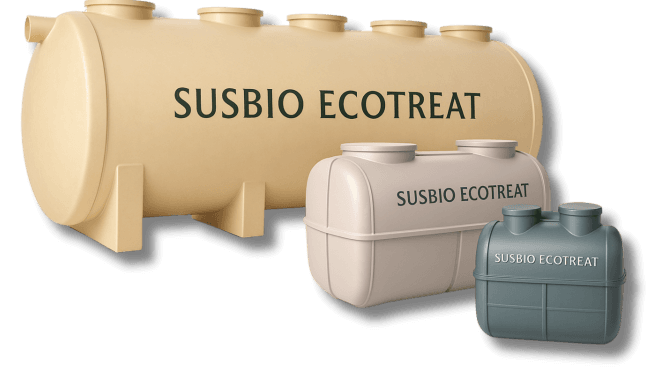
SUSBIO ECOTREAT leads the premium FRP packaged STP solutions market with its exceptional features. This innovative system tackles wastewater treatment challenges head-on.
Dual Treatment Process: Anaerobic + Aerobic
SUSBIO ECOTREAT uses a powerful dual-treatment system that combines anaerobic and aerobic biological stages. The process breaks down organic pollutants in two steps. Complex compounds break down in the anaerobic phase first. The aerobic treatment then finishes the job to produce crystal-clear water. This complete sewage treatment delivers outstanding results.
90% Energy Savings with Automated Operation
The system cuts electricity use by 90% compared to regular sewage treatment plants. Smart controls, optimized aeration, and energy-efficient parts make this possible. Your operational costs drop dramatically while supporting sustainability goals and reducing carbon footprint.
Plug-and-Play Modular Design for Quick Setup
SUSBIO ECOTREAT comes as a ready-to-install unit, unlike traditional plants that take months to build. The setup takes just days instead of months. This quick installation reduces site disruption and labor costs. The system works perfectly in urban, industrial, or remote settings.
No Operator Required: Fully Automatic System
Advanced automation systems run the plant without human supervision. The system monitors and controls the treatment process on its own. You save on labor costs and avoid human errors. This makes it perfect for unmanned or remote locations.
Noise-Free and Odorless Operation for Urban Use
The system runs quietly, which works great in residential areas. Neighbors won’t notice any odors. These features make SUSBIO ECOTREAT an excellent choice for urban installations.
Conclusion
The right FRP STP system plays a vital role in eco-friendly wastewater management for facilities of all types. This piece highlights the major benefits these systems bring – exceptional corrosion resistance, space efficiency, lower energy use, and minimal upkeep needs.
Plant engineers should think about four key factors when making their choice. They need to calculate wastewater load accurately, understand site installation needs, meet compliance standards, and evaluate total ownership costs. These factors will affect long-term performance and ROI substantially.
Each application needs its own specific technology. MBBR systems excel with steady flows, while SBR technology handles changing loads well. On top of that, IFAS removes BOD/COD better in tight spaces, and non-electric systems work great for remote sites with unreliable power.
SUSBIO ECOTREAT leads the pack among FRP packaged STP solutions today. Its dual treatment process combines anaerobic and aerobic stages to remove contaminants thoroughly. The system saves 90% energy compared to regular plants and runs automatically without an operator. The plug-and-play design makes installation quick, which works perfectly for new projects and modernization efforts.
Modern facilities should choose advanced solutions like SUSBIO ECOTREAT that balance efficiency, compliance, and sustainability. A good FRP STP system meets today’s treatment needs and brings lasting value through lower operating costs and environmental impact. Plant engineers who match their needs with the technologies we’ve covered here will make smart, informed choices for their wastewater challenges.
Key Takeaways
Selecting the right FRP STP requires understanding your specific wastewater capacity needs, site conditions, regulatory compliance, and total ownership costs to ensure optimal performance and value.
- Calculate daily wastewater load accurately: residential users generate 135L/person/day, hotels 250-400L/room/day, and factories 40L/employee/day
- FRP STPs offer superior corrosion resistance, 90% energy savings, compact footprint, and 15-25 year lifespan compared to concrete systems
- Choose technology based on application: MBBR for steady flows, SBR for variable loads, IFAS for high BOD/COD removal in compact spaces
- SUSBIO ECOTREAT delivers dual anaerobic-aerobic treatment, plug-and-play installation, fully automated operation, and noise-free performance
- Ensure compliance with CPCB standards: pH 6.5-8.5, BOD ≤10 mg/L, COD ≤50 mg/L for regulatory approval and water reuse
Modern FRP packaged STPs like SUSBIO ECOTREAT represent the future of wastewater treatment, combining advanced technology with practical benefits that deliver both environmental compliance and operational efficiency for plant engineers.
Frequently Asked Questions
Q1. How do I determine the appropriate capacity for an FRP STP?
To determine STP capacity, calculate daily wastewater generation based on the type of facility. For residences, estimate 135 liters per person per day. Hotels generate 250-400 liters per room daily, while factories produce about 40 liters per employee. Add a 10-15% safety margin to prevent system overload.
Q2. What are the key regulatory standards for STP effluent in India?
The Central Pollution Control Board (CPCB) mandates specific discharge parameters for treated wastewater. These include a pH between 6.5-8.5, Biochemical Oxygen Demand (BOD) ≤10 mg/L, Chemical Oxygen Demand (COD) ≤50 mg/L, and suspended solids ≤10 mg/L.
Q3. What are the main types of sewage treatment technologies?
The four main types of sewage treatment technologies are physical, biological, chemical, and sludge water treatment. These methods are used in combination to remove contaminants and produce treated water that is safe for environmental discharge or reuse.
Q4. What advantages does an FRP STP offer over conventional concrete systems?
FRP STPs offer several advantages including superior corrosion resistance, a compact footprint, energy efficiency (up to 90% savings), and a longer lifespan of 15-25 years. They also require less maintenance and can be installed more quickly than traditional concrete systems.
Q5. How does the SUSBIO ECOTREAT system differ from other FRP STPs?
SUSBIO ECOTREAT employs a unique dual treatment process combining anaerobic and aerobic stages for comprehensive pollutant removal. It features fully automated operation, requires no dedicated operator, and achieves 90% energy savings. Its plug-and-play design allows for quick installation, making it suitable for various applications including urban and remote locations.


